WARSZAWA W PIGUŁCE jest 5-o godzinną wycieczką.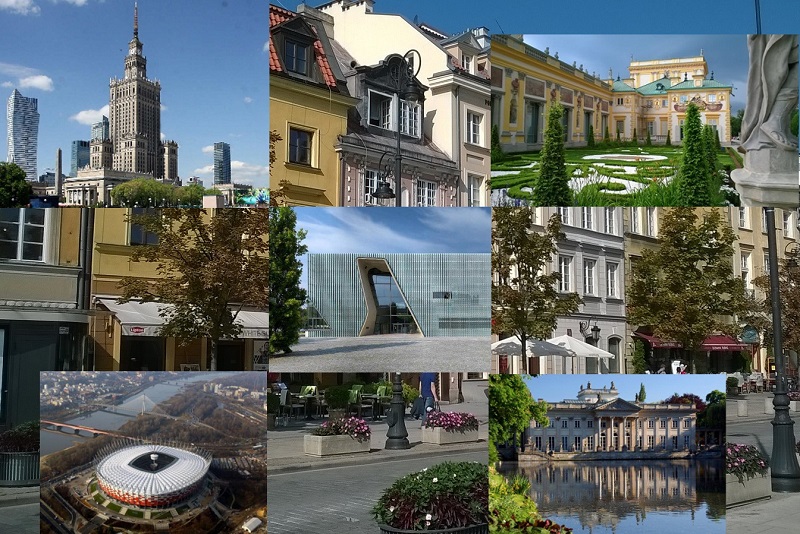 Zabiorę Państwa z hotelu bądź innego umówionego miejsca i podróżując moim wygodnym Citroenem C4 Picasso, również trochę spacerując, odwiedzimy większość z najciekawszych miejsc Warszawy.
Zabiorę Państwa z hotelu bądź innego umówionego miejsca i podróżując moim wygodnym Citroenem C4 Picasso, również trochę spacerując, odwiedzimy większość z najciekawszych miejsc Warszawy.
Na początek zaskoczę Państwa nowym wizerunkiem Pałacu Kultury i Nauki, chyba najbardziej zapadającą w pamięć budowlą Warszawy, zwłaszcza dla turystów z zagranicy. Co ma wspólnego radziecka, socrealistyczna architektura PKiN-u z Nowym Jorkiem?
Nieopodal znajduje się Plac Grzybowski z przeplatającymi się polsko-żydowskimi dziejami, z jedyną w Warszawie przedwojenną, czynną synagogą.
Stamtąd kilka minut zajmie nam przejazd do Krakowskiego Przedmieścia. Ulica jest częścią tzw. Traktu Królewskiego i z pewnością najciekawszą i najpiękniejszą promenadą miasta. Tu budowali swe wspaniałe rezydencje arystokraci a nawet królowie. Fasady i wnętrza pałaców i licznych kościołów projektowali najznakomitsi architekci sprowadzeni z Włoch Saksonii i innych krajów.
Przy Krakowskim Przedmieściu ma swą siedzibę Prezydent Rzeczypospolitej Polskiej. Tu również znajduje się główny kampus Uniwersytetu Warszawskiego. Podążając w kierunku Starego Miasta przejdziemy obok najbardziej luksusowego Warszawie Hotelu – Bristol. Naszej wędrówce będzie towarzyszyła muzyka Fryderyka Chopina, który mieszkał tu w pierwszej połowie swojego życia.
Zwieńczeniem Krakowskiego Przedmieścia jest Zamek Królewski z Placem Zamkowym. Turyści najczęściej robią sobie tu zdjęcia i selfie. To fotogeniczne miejsce doskonale nadaje się aby trochę odpocząć, napić się dobrej kawy czy herbaty.
Po zapoznaniu się z historią zamku będącego od XVI wieku siedzibą królów Polski, udamy się w dalszą podróż samochodem.
Przyjedziemy przez najpiękniejsze place Warszawy. Zobaczymy jeden z największych w Europie budynków teatru i opery. Na jego tyłach znajduje się nowoczesny Metropolitan zaprojektowany przez Normana Fostera, jednego z najbardziej rozpoznawalnych architektów na świecie.
Przed wojną 30% populacji Warszawy stanowili Żydzi. Przejedziemy przez tereny starej Dzielnicy Północnej w granicach której naziści zorganizowali getto. Zobaczymy miejsca upamiętniające tragiczne losy osób jego mieszkańców. Dzieje osób wyznania mojżeszowego w Polsce sięgają aż do czasów średniowiecza. Przyjrzymy się niedawno wzniesionemu, bardzo ciekawemu budynkowi Muzeum Historii Żydów Polskich POLIN opisującemu te dzieje.
Kolejnym naszym przystankiem będzie niezwykła konstrukcja Biblioteki Uniwersyteckiej (BUW) posiadająca jeden z największych ogrodów dachowych w Europie. Po wejściu schodkami na górę roztoczy się przed nami wspaniała panorama Warszawy.
Końcowym punktem naszej podróży będzie jeden z najpiękniejszych zespołów pałacowo ogrodowych w Europie. Można powiedzieć, że jest to ukoronowanie ambicji, mającego doskonałe wykształcenie i gust, ostatniego polskiego monarchy - Stanisława Augusta.
Jest to też ukoronowanie naszej podróży WARSZAWA W PIGUŁCE.
SOUTHERN DOWNTOWN
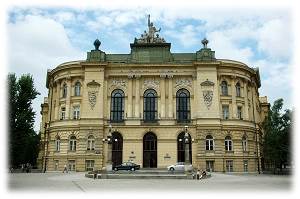 Southern Downtown - rarely visited by tourists. The same applies to the residents of Warsaw. Certainly they would be surprised what you can find here.
Southern Downtown - rarely visited by tourists. The same applies to the residents of Warsaw. Certainly they would be surprised what you can find here.
It provides a counterbalance to the modern part of the city situated on the other side of Jerusalem Avenue. Large fragments of this district were happily rescued during World War II. It gives them a value. We enter the world of Warsaw at the turn of the 19th and 20th centuries - beautiful Art Nouveau decorations, the tenements of Artur Gurney a'la castle, and the existing coffee shop of the Polonia Hotel, where coffee is served with apricot liqueur.
It is hard to believe that in the era of post-war socialist realism, just a few steps away from its symbol which is the Palace of Culture and Science, Ufficio Primo was erected, referring to the palaces of Florentine bankers. Perhaps an even greater surprise is when you enter this extraordinary building.
During our walk, it is worth to see a forgotten courtyard with a statue of Our Lady, where during the occupation the inhabitants tried to keep the appearance of normality. In this place they prayed after curfew, often vows were concluded here.
Coffee break or refreshment can be in the Hala Koszyki. More than 100-year-old building was in 2016 completely restored and today encourages with it’s very interesting interior to stop, relax or shopping.
Full of interesting burgher houses Lwowska Street leads to the Polytechnic Square dominated by one of the most beautiful buildings of polytechnic universities in Europe. The main building of the Warsaw University of Technology is a typical example of architecture relating to the style of the Italian Renaissance and Baroque. The two-storey façade with rounded corners is decorated with very popular in the second half of the nineteenth century motifs of the twin Corinthian columns separated by arcades. It is imperative to see the interior. A large circular courtyard is covered by a glass mosaic roof.
At the end of our wandering around Downtown South again we return to the socialist realist concept of post-war reconstruction, which is the Constitution Square. However, regardless of its "political" context, it should be noted that this is the only square in Warsaw with uniform architectural dress, which gives it some beauty. Moreover, it is not well known that the architects designing the Constitution Square largely relate to the beautiful facades of 1910s buildings located on Mazowiecka Street. Incredible but true. Famous "candelabras" of the square - it is another story.
IN THE FOOTSTEPS OF FREDERIC CHOPIN
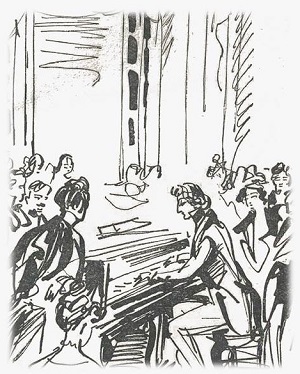
Fryderyk Chopin in Warsaw spent half of his life. During the walk we will follow in his footsteps and also listen to excerpts of his famous compositions.
The walk will begin at the Tomb of the Unknown Soldier, which is the only surviving fragment of the Saski Palace. The Chopin family moved to his right annexe a few months after Fryderyk's birth in Żelazowa Wola. From here, you can enjoy a beautiful view of the Saxon Park or the classicist dome of the Church of Sts. Trinity.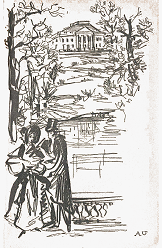 For several years, Chopin played in the Church of the Visitation of the organ during Sunday Masses for high school students. The facade of the church of the Visitation is considered the most beautiful baroque sacred elevation of Warsaw. Architect Karol Bay for the first time applied the some bold solution. Surely this encouraged Canaletto to perpetuate the image of the eighteenth-century church.
For several years, Chopin played in the Church of the Visitation of the organ during Sunday Masses for high school students. The facade of the church of the Visitation is considered the most beautiful baroque sacred elevation of Warsaw. Architect Karol Bay for the first time applied the some bold solution. Surely this encouraged Canaletto to perpetuate the image of the eighteenth-century church.
Fryderyk Chopin's first romantic, youthful love was Konstancja Gładkowska, whom he met in the conservatory. In a letter to his friend Fryderyk confesses that "it was an adagio for my concert (in F minor)". Of course, it was about Constance, who was the inspiration for this beautiful part of the concert. Before living Poland for ever, Fryderyk farewell to Constance in the Royal Baths.
Wandering on Krakowskie Przedmiescie we will see the next places where the Chopin family lived. In one of the houses lived first professional teacher of Chopin - Wojciech Żywny. Near this place we'll pass the buliding of the old post office where Chopin said goodbye to loved ones and leaving his homeland forever.
The most visited place connected with Chopin is the church of Sts. Cross. In one of the pillars of the temple built the urn with the heart of the composer.
WARSAW BY SCOOTER
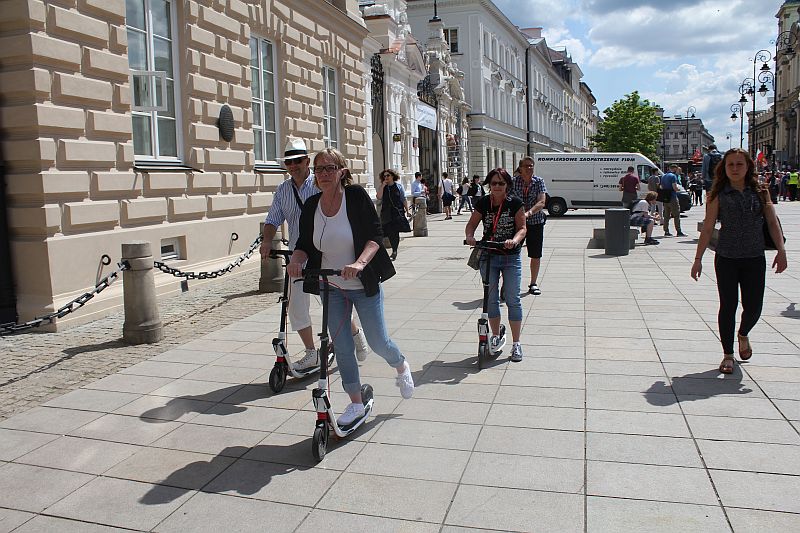
During the ride we find the place of Fryderyk Chopin's heart. 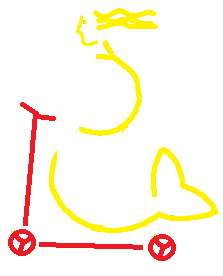 We will look at the most beautiful baroque church in Warsaw. We count the crown bat above one of the gates to find out about the owner of the residence. We will walk through the mysterious door of a closed monastery (completely legal), there we will explain what is the device placed in the wall channel. In the courtyard of the University of Warsaw we will see the extraordinary memorial found by the Earl of Uruski during the dismantling of the Poniatowski Palace. It reminds us of the place where Stanisław Antoni Poniatowski heard about his election to the throne. From one of Canaletta's paintings, we will find out how the Presidential Palace looked before Aignerian reconstruction.
We will look at the most beautiful baroque church in Warsaw. We count the crown bat above one of the gates to find out about the owner of the residence. We will walk through the mysterious door of a closed monastery (completely legal), there we will explain what is the device placed in the wall channel. In the courtyard of the University of Warsaw we will see the extraordinary memorial found by the Earl of Uruski during the dismantling of the Poniatowski Palace. It reminds us of the place where Stanisław Antoni Poniatowski heard about his election to the throne. From one of Canaletta's paintings, we will find out how the Presidential Palace looked before Aignerian reconstruction.
On the Podwale street I will ask you a question what could be used for mysterious holes in the wall at the stairs of the Branicki Palace. I will show you the narrowest façade in Warsaw and I will explain why the owners of this tenement house would not replace it with any other. On the Old Town Square for some purpose we count the axes of tenements. Why did Antoni Magier for 25 years, three times a day, hang a tin figures from his balcony?
Old Town hides a lot of interesting stories, relics referring to the place where in the thirteenth century the first fortified settlement and in the highest point the market was planned.
Our historical tour of Krakowskie Przedmieście and the Old Town can be varied with an interesting quiz with small prizes, of course for the willing.
NOVELTY!
It's time to replace traditional scooters with electric ones. For today we have 15 electric scooters that can drive up to 15 km. We offer a standard route with a length of 10 km covering the most attractive places of the old and new Warsaw.

I invite you to explore Warsaw by scooter.












